Risk Management and Compliance Software | GRC Solutions
Manage operational risk, ensure regulatory compliance, and demonstrate governance across all your sites with integrated GRC (Governance, Risk and Compliance) software. OpsPal provides the systems, audit trails and accountability needed to identify risks, track compliance obligations, implement controls, and prove to regulators, insurers and auditors that you manage risk systematically rather than reactively. See how Stirling University uses OpsPal














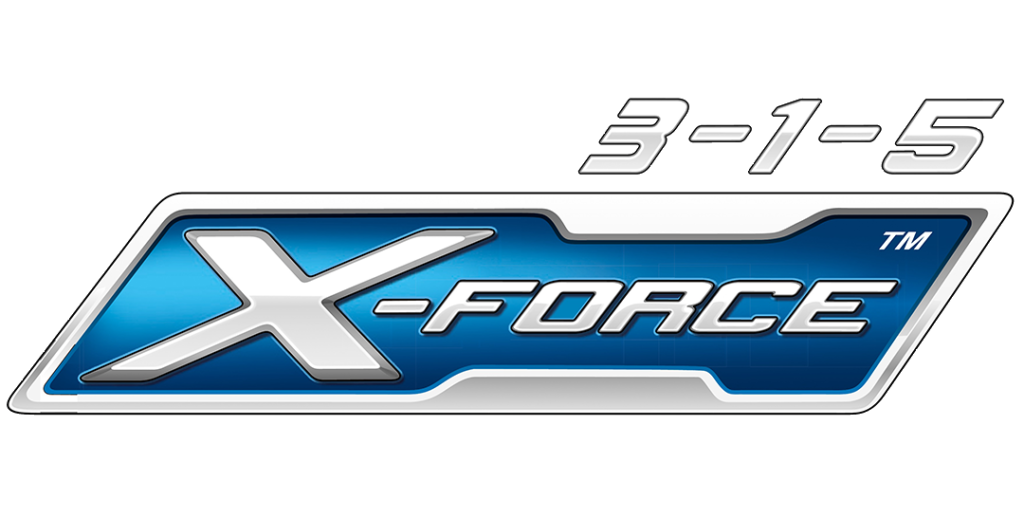





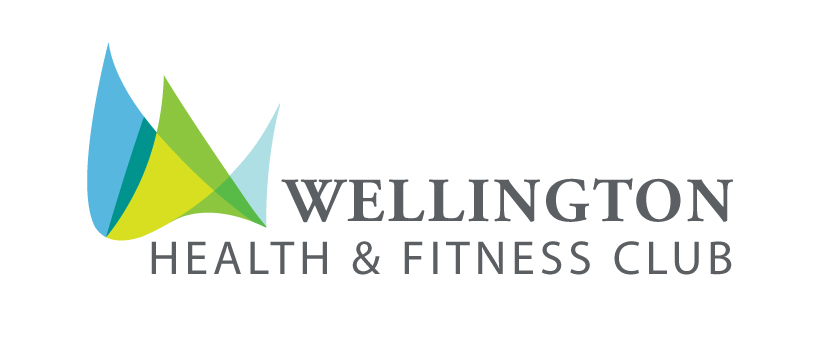

















Identify and assess risks across your operations
Effective risk management starts with comprehensive risk identification and assessment. OpsPal provides the structure to identify hazards, assess their potential impact, implement controls, and monitor whether risk mitigation measures remain effective.
Create and maintain risk registers covering all operational risk categories — health and safety hazards, environmental risks, compliance breaches, reputational threats, operational failures, financial exposures and security vulnerabilities. Digital risk assessments ensure consistent methodology across all sites, with location tracking showing where specific risks are concentrated.
Track how risks change over time
When controls are implemented, reassess risk levels to verify effectiveness. When circumstances change (new equipment, processes, sites or regulations), update affected risk assessments. Monitor whether risk trends are improving or deteriorating across your organisation.
Link risk assessments to the controls meant to mitigate them. Connect workplace hazards to procedures describing safe working practices. Link compliance risks to monitoring tasks verifying regulatory adherence. Associate operational risks with preventative maintenance preventing equipment failures. This integration ensures risk management connects to operational reality rather than existing as isolated documentation.
Multi-site operators gain visibility of risk profiles across different locations. Compare risk exposure between sites. Identify whether certain locations carry disproportionate risk requiring additional controls or resources. Use this intelligence for strategic risk management decisions rather than treating each site in isolation.
Track compliance obligations and deadlines
Regulatory compliance creates complex tracking requirements — statutory inspections, certification renewals, periodic testing, training requirements, licence conditions and industry-specific regulations. Miss a compliance deadline and you risk regulatory enforcement, insurance invalidation, prosecution or reputational damage.
OpsPal’s compliance management tracks every obligation across all locations. Schedule inspections, tests and certifications according to regulatory frequencies. Automated reminders ensure deadlines aren’t missed — fire safety inspections, electrical testing, lifting equipment examinations, gas safety checks, food hygiene inspections, environmental permits, data protection audits and countless other requirements.
Capture compliance evidence as tasks are completed
When fire alarms are tested, electrical systems inspected, or safety training delivered, the system creates time-stamped records with completion evidence. This audit trail demonstrates systematic compliance management to regulators and insurers.
Multi-site compliance visibility shows which locations are compliant and which have outstanding obligations. Filter by compliance type, due date, site or status. Generate compliance reports for board meetings, audit committees or regulatory inspections. Escalating alerts notify senior management when compliance deadlines approach without action.
Link compliance obligations to the policies, procedures and training supporting them. Food safety compliance connects to food hygiene procedures, HACCP plans and staff training records. Health and safety compliance links to risk assessments, safe systems of work and competency records. This integration proves you don’t just tick compliance boxes — you embed requirements into how you operate.
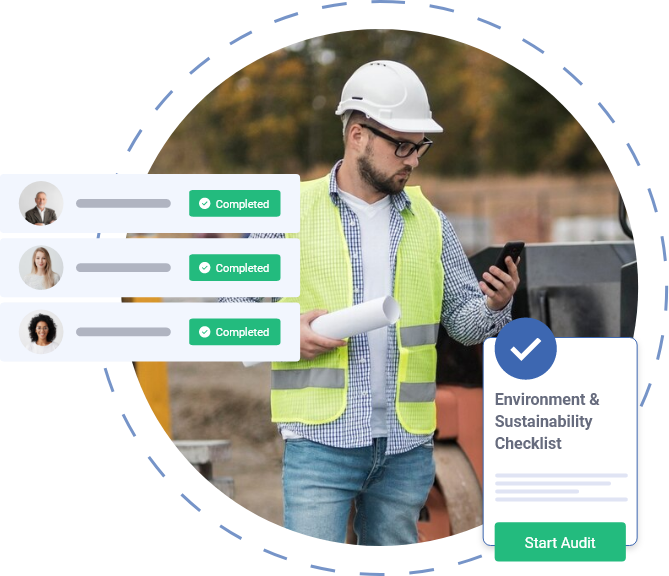
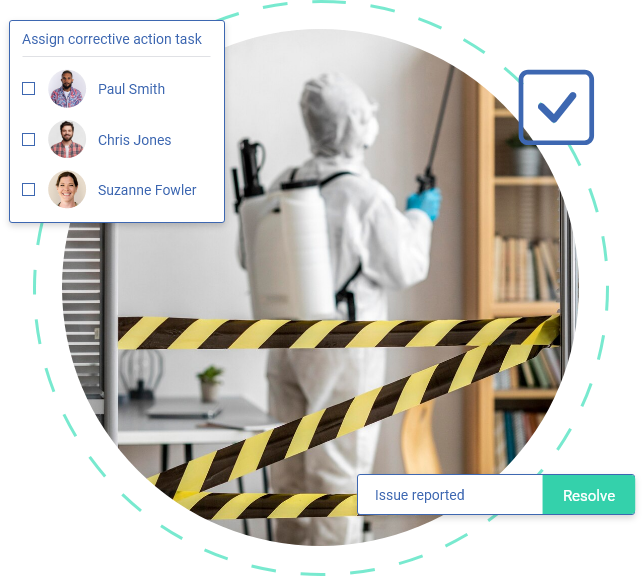
Respond to incidents and implement corrective actions
When things go wrong
Incidents, near-misses, compliance breaches, audit findings or customer complaints — systematic investigation and corrective action prevent recurrence and demonstrate responsible risk management.
Incident reporting captures what happened, who was affected, immediate actions taken and potential root causes. Photographic evidence, witness statements and location data provide comprehensive incident records. Automated workflows route incidents to investigators based on severity, type or location.
Root cause analysis identifies why incidents occurred rather than just what happened. Distinguish between immediate causes (person slipped) and underlying failures (inadequate cleaning procedures, missing non-slip flooring, insufficient supervision). This analysis drives corrective actions addressing systemic problems rather than blaming individuals.
Corrective action tracking
Ensures improvements are implemented and verified. When investigations identify control failures, generate improvement tasks assigned to owners with deadlines. Track whether corrective actions actually resolve issues or require further intervention. Monitor corrective action completion rates across sites to ensure findings lead to genuine improvements.
Trend analysis reveals recurring problem patterns. When similar incidents happen repeatedly, you’ve identified systemic risks requiring strategic intervention rather than site-by-site responses. Use incident data to prioritise risk reduction initiatives and demonstrate continuous improvement of risk management.
Link incidents back to risk assessments. When hazards materialise into actual incidents, review whether existing controls failed, were insufficient, or weren’t followed. Update risk assessments based on incident learning. This closed-loop process ensures risk management reflects operational reality.
Demonstrate governance and accountability
Risk management and compliance aren’t just operational necessities
They’re governance responsibilities. Boards, executives, regulators, insurers and stakeholders expect evidence of systematic risk governance, not informal arrangements relying on individual knowledge.
Complete audit trails show what was done, when, by whom and at which location. Every risk assessment, compliance check, incident investigation and corrective action links to an individual user. This granular accountability prevents governance failures where nobody owns critical activities or responsibility is unclear.
Generate governance reports for boards and audit committees showing risk profiles, compliance status, incident trends and corrective action effectiveness. Filter by site, risk type, compliance category or time period. Provide leadership with the risk oversight information needed for strategic decisions and regulatory disclosures.
Demonstrate to regulators and auditors that you manage risk systematically. Show comprehensive risk identification, consistent assessment methodology, implemented controls, compliance tracking, incident investigation and corrective action. This evidence supports regulatory defences, insurance renewals and certification audits.
Policy and procedure management ensures governance requirements are communicated and acknowledged. Track which staff have read policies on anti-bribery, data protection, environmental responsibility, or health and safety. Maintain version control showing policy updates deploy across all sites. This documentation proves governance standards are embedded throughout your organisation.
Support GRC (Governance, Risk and Compliance) frameworks by integrating the three elements. Governance provides oversight and accountability. Risk management identifies and mitigates threats. Compliance ensures regulatory adherence. OpsPal integrates all three into operational systems rather than maintaining separate GRC functions disconnected from daily operations.
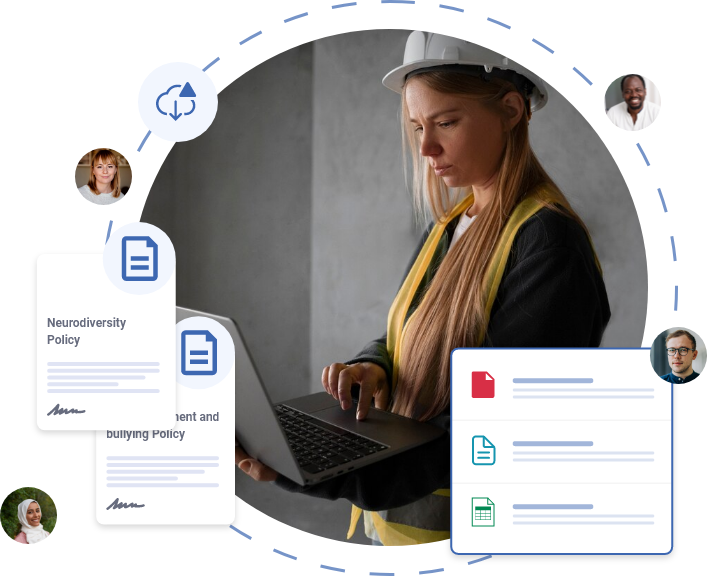
Book a Call With Our Team
We’re on hand for any questions you may have. Simply book a meeting using our booking system and we will talk you through any questions.
